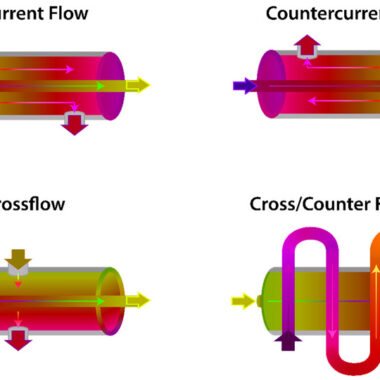The Different Types of Plate Designs in Plate Heat Exchangers
The Different Types of Plate Designs in Plate Heat Exchangers
Plate heat exchangers (PHEs) are known for their effectiveness, compact plan, and adaptability. One of the key features contributing to their flexibility is the assortment of plate plans accessible. Each plan has specific characteristics that make it reasonable for different applications and operational conditions. Here’s an brief of the different types of plate designs in plate heat exchangers :
1. Gasketed Plate Heat Exchangers (GPHEs)
Design:
Plates are fixed with gaskets that form a tight seal around the plates, avoiding liquid mixing.
Applications:
Perfect for applications requiring visit disassembly and cleaning, such as food and refreshment processing, HVAC, and pharmaceuticals.
Advantages:
- Simple to preserve and clean.
- Adaptable for capacity changes by including or removing plates.
2. Brazed Plate Heat Exchangers (BPHEs)
Design:
Plates are brazed along with a filler material, regularly copper or nickel, making a compact and leak-proof unit.
Applications:
Commonly utilized in refrigeration, HVAC systems, and smaller-scale industrial forms.
Advantages:
- Tall thermal efficiency due to compact plan.
- Appropriate for high-pressure and high-temperature applications.
- Low maintenance since there are no gaskets.
3. Welded Plate Heat Exchangers
Design:
Plates are welded together, dispensing with the need for gaskets. Types incorporate completely welded and semi-welded plans.
Applications:
Appropriate for taking care of aggressive chemicals, high temperatures, and pressures, frequently utilized within the chemical and petrochemical businesses.
Advantages:
- Safe to tall temperatures and pressures.
- Appropriate for applications where gasket materials would fail.
Sub-types:
Completely Welded:
Plates are completely welded, giving a robust arrangement for extraordinary conditions.
Semi-Welded:
Alternating sets of plates are welded together, and the sets are gasketed. This plan combines the benefits of welded and gasketed PHEs.
4. Double-Wall Plate Heat Exchangers
Design:
Comprises of two plates welded or bonded together at the edges, making a double-wall barrier between fluids.
Applications:
Utilized in applications where cross-contamination between fluids must be maintained a strategic distance from, such as nourishment handling, pharmaceuticals, and HVAC systems.
Advantages:
- Gives extra security against liquid mixing.
- Perfect for applications with strict safety and hygiene requirements.
5. Free-Flow Plate Heat Exchangers
Design:
Plates are outlined with wider gaps to permit for the section of fluids with high particulate substance or tall viscosity.
Applications:
Appropriate for applications including dirty, viscous, or fouling liquids, such as wastewater treatment and certain food handling operations.
Advantages:
- Diminished risk of clogging and fouling.
- Lower support prerequisites due to the wide flow passages.
6. Evaporator and Condenser Plates
Design:
Specialized plates outlined to improve phase change processes, such as vanishing and condensation, ordinarily with a particular pattern to facilitate efficient heat transfer.
Applications:
Commonly utilized in refrigeration systems, heat pumps, and HVAC systems.
Advantages:
Optimized for effective phase change, moving forward the generally effectiveness of refrigeration and heat pump systems.
Conclusion
The assortment of plate plans in plate heat exchangers permits for customization and optimization over different industrial and commercial applications. Gasketed, brazed, welded, double-wall, free-flow, and specialized evaporator/condenser plates each offer unique benefits custom fitted to specific operational needs. Understanding the advantages and reasonable applications of each plan makes a difference in selecting the proper plate heat exchanger for your requirements, guaranteeing optimal performance, efficiency, and longevity.





